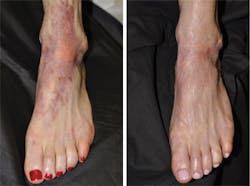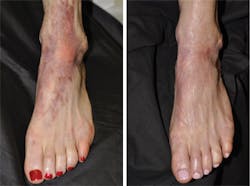Fractional ablative lasers mimimize burn severity
"Fractional ablative lasers have become an amazing tool for correcting both the aesthetic and functionality issues presented by serious burn scars," explained Jill Waibel, MD, medical director at Miami Dermatology and Laser Institute (Miami, FL) in a presentation at this year's American Society for Laser Medicine and Surgery (ASLMS) conference, held in mid-April in Kissimmee, FL.
Waibel, who first used a fractional ablative laser to treat a burn patient in 2009, says that fractional ablative lasers vaporize the scar by heating the skin up to over 100°C and creating a grid of tiny holes, eventually replacing the scarred area with brand-new, healthy collagen to enable healing quickly. She told BioOptics World that the most successful lasers she's used to accomplish this have been the UltraPulse 10,600 nm carbon dioxide (CO2) laser from Lumenis (Yokneam, Israel) and the ProFractional Therapy 2940 nm erbium:YAG laser from Sciton (Palo Alto, CA; see figures). The two laser systems have the ability to penetrate tissue to 4 and 2 mm depths, respectively, she adds.
"Treating a scar is a dynamic process since the scar changes as therapy progresses," explains Waibel. In burn victims, severe scars typically do not appear during their initial recovery time, she says, so treating the scarring early with the laser treatments—while the patients are still in the burn unit—enables her to minimize the severity of the scar and see increased functional range of motion.
On average, burn victims should expect to go through three to five treatments to see best results, explains Waibel. "The hands of one of my patients were so scarred she couldn't turn a door knob or put the keys in her car," she recalls. "After two or three laser treatments, however, she was able to take change out of her pocket."


